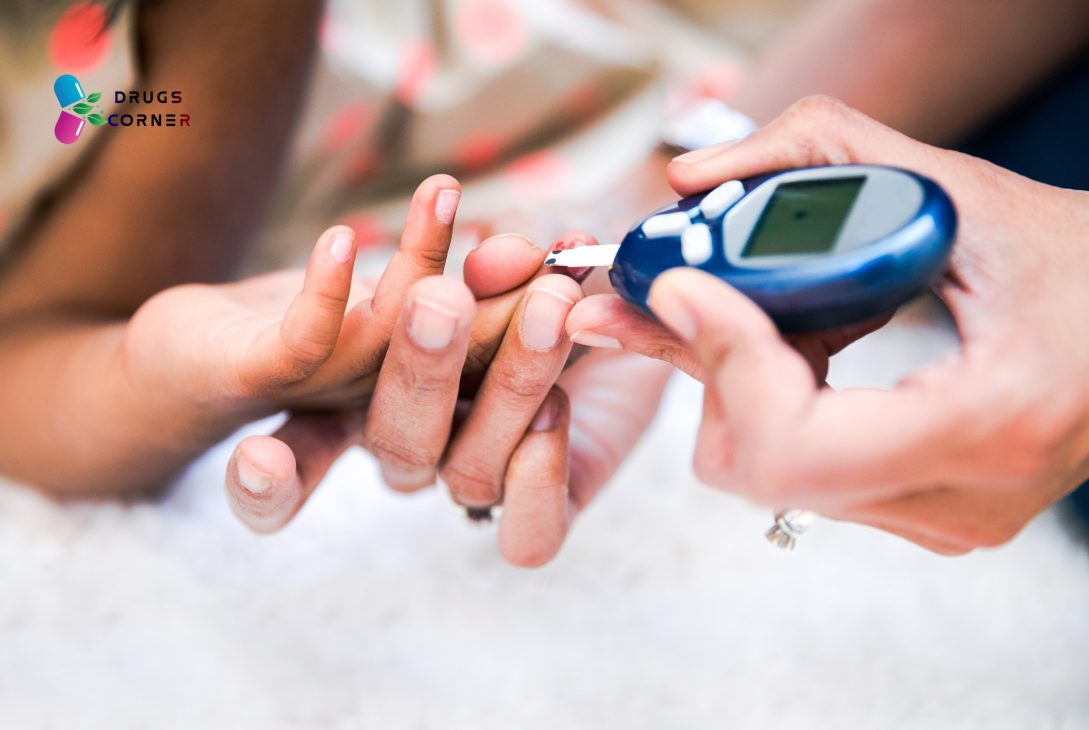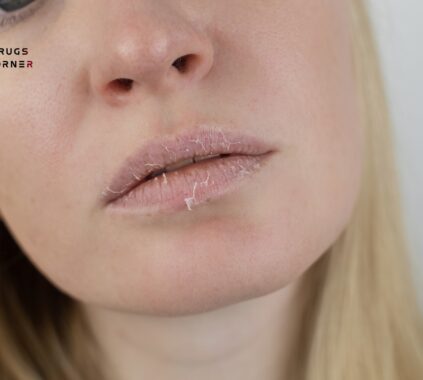Type 1 diabetes, is insulin-dependent caused due to genetics or viruses. Explore its risk factors, diagnosis, and possible treatments.
Finding ways to treat Type 1 diabetes? There is no exact cure that can treat, although you can take proper medications, and manage blood glucose levels to keep it in control. This juvenile diabetes has no specific onset and makes the body insulin-dependent as the pancreas does not make insulin which breaks down glucose into energy. This long-term medical condition can be found in children and youngsters, due to genetics and viral attacks.

You can have basic learning about Type 1 diabetes in this guide illustrating causes, symptoms, and fundamental treatment options.
Type 1 Diabetes (Juvenile Diabetes)
Type 1 diabetes is an autoimmune disorder (i.e., the immune system mistakenly targets healthy body cells) in which the pancreas does not make insulin, which is involved in regulating glucose levels in the body by utilizing it as the energy source. If insulin does not metabolize sugar, it will accumulate and bring lethal circumstances.
In type 1 diabetes, the body’s immune system (aka. Defense system) harms the beta cells that produce insulin, and ultimately glucose does not enter into body cells and blood glucose level abnormally rises.
Type 1 diabetes is mostly apparent in children and the young generation, because of which it is called juvenile diabetes. People suffering from such type of diabetes rely on synthetic insulin to live life by using insulin injections. Most commonly diagnosed people with type 1 diabetes are aged between 4 to 6 years or people with their puberty age.
Irritable Bowel Syndrome (IBS): Navigating The Worsening Bowel Health!How Type 1 Diabetes Is Different Than Type 2 Diabetes?
In type 1 diabetes
- The pancreas does not release insulin at all, and if produced then destroyed by beta cells as an autoimmune response.
- The sugar gets accumulated, and hyperglycemia is caused and is life-threatening.
- Children get type 1 diabetes because of family history and are given insulin injections to compensate for the role of insulin within the body.
- This type is either congenital or because of any viral attack.
- It is a less common type of diabetes, as only 5-10% of people are affected with type 1 diabetes.
In type 2 diabetes
- The pancreas makes insulin, but the body does not respond to it the way it normally does in non-diabetic people, as the body becomes insulin-resistant.
- To regulate the functionality of sufficient insulin availability within the body, patients either take medications or injections.
- This type of diabetes is caused due to obesity, poor lifestyle, and stress.
- This is the most common type of diabetes and has onset at age 40.
Type 1 Diabetes: Causes & Risk Likelihood
There are no exact causes that have been specifically leading to type 1 diabetes. So far Researchers have identified two main causes,
- Genetics: If you have a family history, and both of your parents have then your chances of getting these increases up to 30%, but if neither of your parents have then there is a 0.4% chance of you getting type 1 diabetes.
- Viruses or toxins: Another factor is viruses, or other toxins caused by the environment as the probability gets increased because your immune system mistakenly starts destroying healthier cells instead of invading cells.
How To Navigate the Best Non-Hormonal Birth Control Method?Type 1 Diabetes: Symptoms
The symptoms commonly apparent in type 1 diabetes include,
- Extreme hunger, even after a person has eaten, will not go away.
- Uncontrolled and excessive urination
- Bedwetting in children’s cases
- Tiredness and fatigue
- Vaginal infections (candida albicans)
- Delayed healing time
- Blurred vision
The above symptoms are common and are present in earlier stages of type 1 diabetes, but if they are treated timely, the situation becomes fatal, which is called Diabetes Ketoacidosis (DKA), in which symptoms are:
- Extreme drowsiness
- Unconsciousness (although it is rare, it can happen)
- Abdominal cramps
- Vomiting
- Irregular breathing
- Fruity smell
If you start to observe these symptoms in your children, you must take them to a physician as soon as possible to avoid negative outcomes.
Type 1 Diabetes: Diagnosis
If you have started to observe symptoms, you must visit your nearest healthcare professional who will recommend you certain tests to diagnose your medical situation.
- Blood Test: Your doctor will suggest you have a random plasma glucose test (RPG), which identifies blood glucose levels within the body.
- Ac1 Test: While seeing your positive blood test, your doctor will undergo a glycosylated hemoglobin test to determine the average level of blood glucose level within the body in the last 8 hours, he may suggest the test with fasting or without fasting, this test gives a clear indication that diabetes is present or not.
After diabetes has been confirmed, the question remains that whether it is type diabetes or type 2 diabetes, your specialist will recommend another test,
- Autoantibodies test: This test determines the presence of autoantibodies that harm the healthy cells, if these are present then the patient has type 1 diabetes as these autoantibodies destroy beta cells of the pancreas which produces insulin. People with type 2 diabetes do not have autoantibodies.
- Urine test: Your doctor may recommend this test so that he can ensure the presence of ketones within the body, which is because your body is breaking down fat instead of starch to get energy which in normal cases is attained by glucose. An excessive number of ketones is harmful as it turns the blood acidic.
Timely diagnosis is required to prevent any life-threatening situation. Even after your diagnosis, you should regularly visit the doctor and act upon the guidelines so that the condition does not worsen.
Type 1 Diabetes: Treatment

Treatment approaches may be different but the goal is to keep the blood glucose level as near to normal as possible. There is no permanent treatment for type 1 diabetes, however, you can keep it in control by taking a healthier lifestyle, appropriate meals, and regular medication.
To live a normal life, type 1 diabetes patients are required to follow these,
- Consume a nutrient-rich and low-carb diet.
- Do regular exercise and keep yourself activated.
You must follow an insulin therapy including different types throughout your lifetime, listed as:
- Regular insulin: This short-acting insulin starts showing effects after half an hour, and peak time (i.e., when activity is maximum regarding lowering blood glucose level) reaches 90 minutes or 2 hours and effects remain as long as 4-6 hours.
- Rapid-acting insulin: This one has fast activity as results start to appear after 15 minutes and peak time is reached just after an hour, effects remain for 4 hours. Patients usually take these 2 hours before mealtime.
- Intermediate-acting insulin: It may slightly longer time to reach into the blood as the activity starts to appear in an hour or maybe three hours and the peak time starts to be activated in six to eight hours.
- Long-acting insulin: This type of insulin remains activated for 10-14 hours and has proven to show results as long as a whole day.
Your dose may vary, In the beginning, you may be given two shots a day but with time, the amount may need to be increased. Your endocrinologist guides you according to your disease’s condition.
10 Unconventional Vegan & Non-Vegan Substitutes for HoneyMedical Complications Associated with Type 1 Diabetes
Type 1 diabetes is concerning on its own, but if not timely treated and neglected, it may become a leading cause of many other diseases, such as:
Nephropathy: Untreated type 1 diabetes causes kidney damage and kidney failure. However, it may not occur during diabetes, but the symptoms appear after 10-25 years. Approx. 15-30% of people get nephropathy.
Heart Disorders: It can cause atherosclerosis, blood clots, arterial damage, and related heart diseases.
Eye Disorders: Type 1 diabetes can also cause retinopathy, in which eyesight worsens, approx. 80% of people get this due to diabetes.
Skin Issues: People suffering from type 1 diabetes are more prone to skin infections.
You must keep your blood sugar level in control to prevent the risk of other physiological conditions that can be harmful to you or your children.
Bottom-line
Type 1 diabetes occurs when the pancreas does not make insulin, a hormone managing blood glucose levels. The absence of insulin is due to the destruction of beta cells in the pancreas, which occurs as a result of a viral attack.
The disease is usually apparent in children or young teenagers who are in puberty age, which is why called juvenile diabetes. Diabetes may also to genes from your parents. It can be diagnosed by blood, urine, or antibody tests. You must take insulin injections regularly to keep your blood glucose level in check.
FAQs on Type 1 Diabetes
What is the difference between type 1 and type 2 diabetes?
The key difference is that in type 1 diabetes, the body does not produce insulin, while in type 2, the body does produce insulin, but is not sufficiently utilized because of insulin resistance.
Which is more serious diabetes 1 or 2?
Neither is better or worse, but you must closely monitor your blood glucose level and adopt careful approaches to properly manage the level.
Can type 1 diabetes be cured?
No permanent treatment is not possible unless you do a pancreatic transplant which is not quite possible.
Contact us at Gmail







